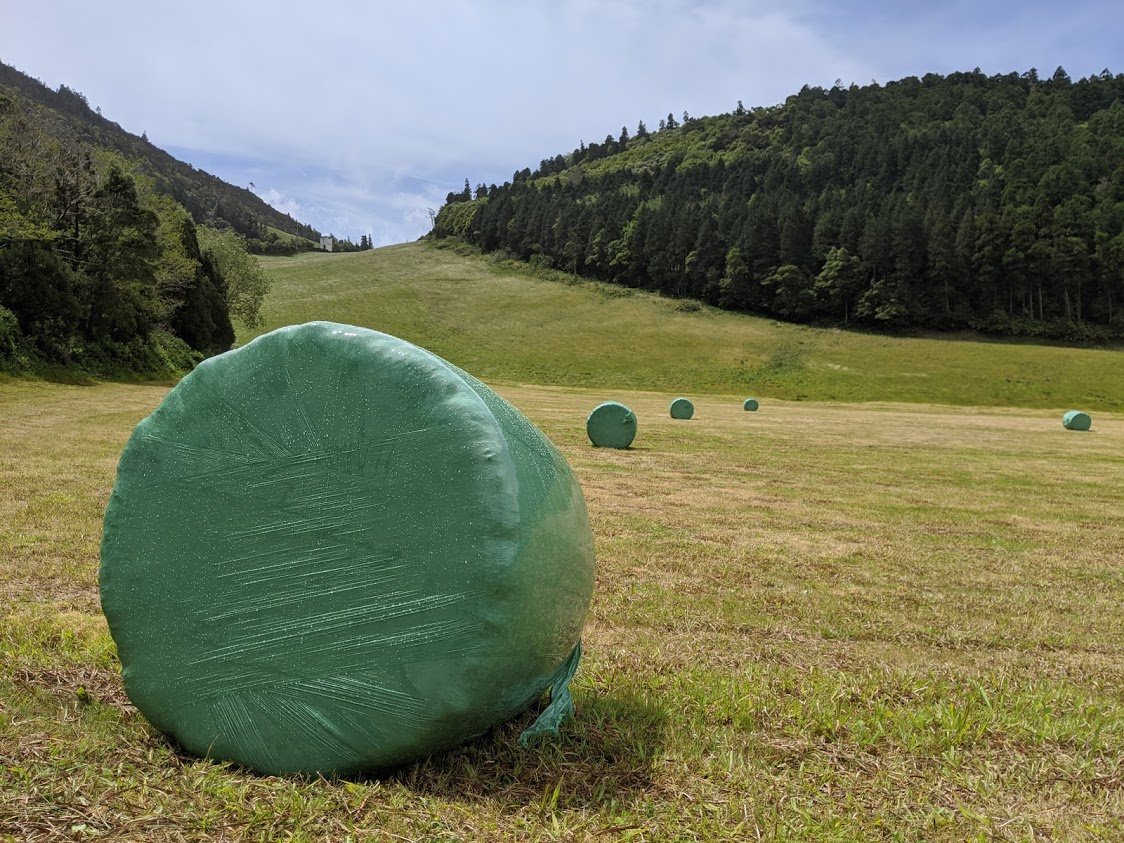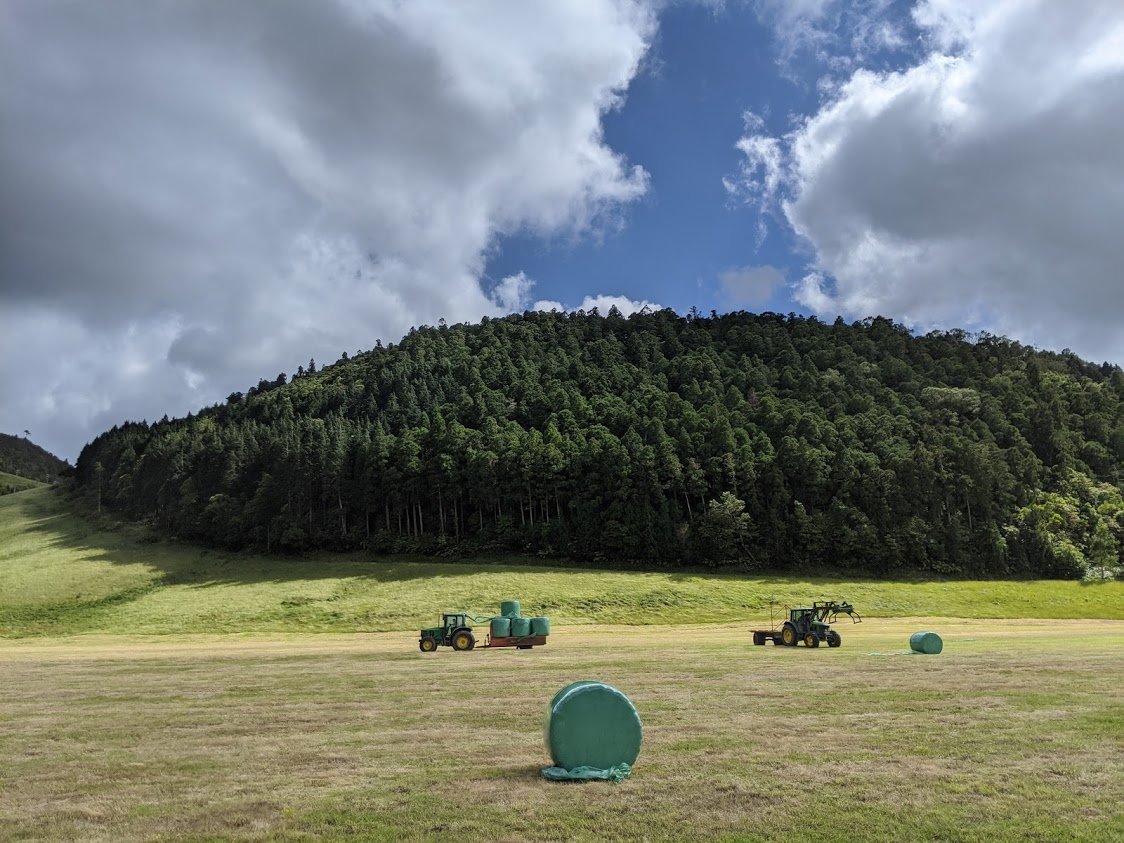Furnas Lake, Sao Miguel, Azores
Portugal
No matter where you live there are numerous ways to observe the emergence of spring. Snowmelt feeds countless rivers and streams with icy water that replenish lakes. Trees begin to leaf, flowers burst with rainbows of color, and community gardens begin to fill with bees and butterflies. And of course, there is the dawn chorus of birdsong.
On the islands of the Azores, as in many parts of the world, another indicator of spring is the cutting, rowing, bailing, and storage of hay. Lots of hay. In the nine island archipelago, it is estimated that there are 125,000 cows. Hungry cows that need to be fed…a lot.

Harvest season is a particularly active period for farmers as timing of the harvest is critical for many reasons, not the least of which is that managing their time, and their crops, is critical to their overall operations.
To use the old adage…farmers “make hay while the sun shines.”
As we travel around the island we started noticing this dance of man and machine, as enormous golden patches of land began to emerge, checkerboarded with deep green pastures. Wait we thought…the last time we drove here everything was green. Why all the yellow?
It wasn’t until we witnessed the entire harvesting process unfold across the road from where we are living that we understood the change of color in the landscape. It took place in a very large field covered in three-foot-high grasses that sway like a thousand hula dancers when the wind blows.

First came the cutting of the field. Within 12-24 hours the cut hay was then lifted or fluffed up in a process known as “tedding” which promotes thorough drying of all parts of the hay. Step three involves “raking” of the dried hay and is the final step in the drying process as it pulls the hay into windrows for baling.
The final step in processing the hay is the baling. There are two options when it comes to the type of bale, square or round. Each type of bale has its advantages depending on the individual needs of the user and type of livestock being fed. Smaller farms with horses and various other livestock will generally get the most productive use from square bales as they are more manageable with less waste. Larger farms or commercial operations that require more substantial amounts of feed will utilize round bales.
The baling was by far the most fascinating part of the entire process. A large contraption (the baler) gathers the rows of hay, compresses them into an enormous roll, and then wraps that roll in a criss-cross layer of thin plastic to seal the deal. Wherever you travel throughout the island you see tens of thousands of these enormous green rolls stacked high in the fields and farmlands.
One of the most interesting, and humorous parts, was watching the tractor slow to a crawl as it gently deposited finished rolls off the back of the baler onto the field as if relieving itself from a very large meal.
Large in this case means…well large…as between 400-800 pounds!
Bear in mind the amount of time, man-hours, and investment in equipment that feeding cows take. Each of the four steps mentioned here, five when you consider the final step of loading the bales onto a flatbed trailer for transport and storage, requires a separate piece of hardware pulled by or attached to, a tractor. It is not difficult to see how feeding the cows that feed us is an expensive and massively complicated undertaking.
Over a four day period, we were witness to each of the steps required to reduce an enormous field of grass into a buzzcut worthy of the most skilled barber. Each day the tractor operators acknowledged our roadside fascination with a wave, a thumbs up, or a big smile. They seemed as amused with us as we were impressed by their remarkable dance with the land.
Farming is not only a labor of necessity but a labor of love and is perennially carried out by generations of men, women, and occasionally their gap-toothed children riding shotgun.
